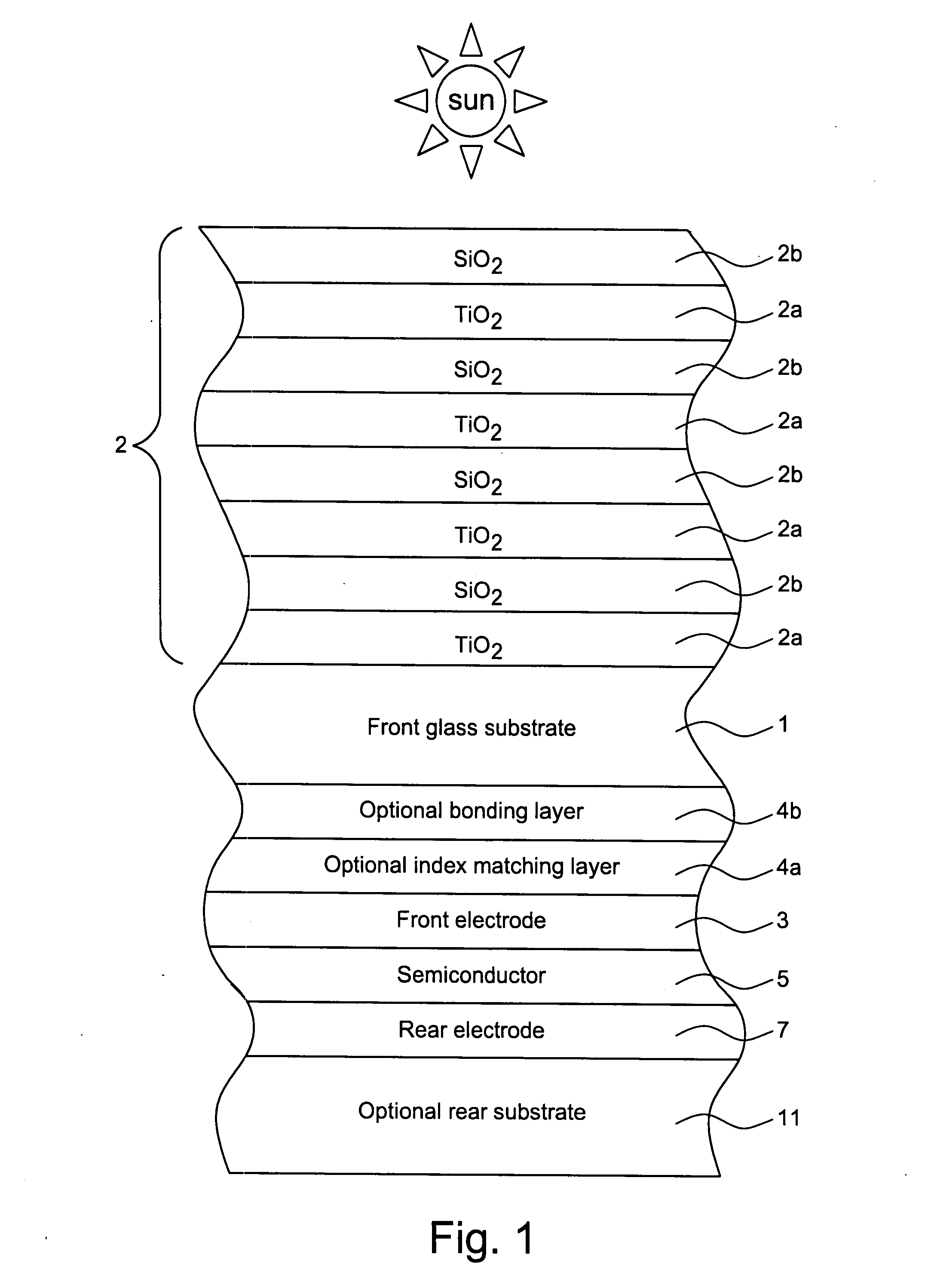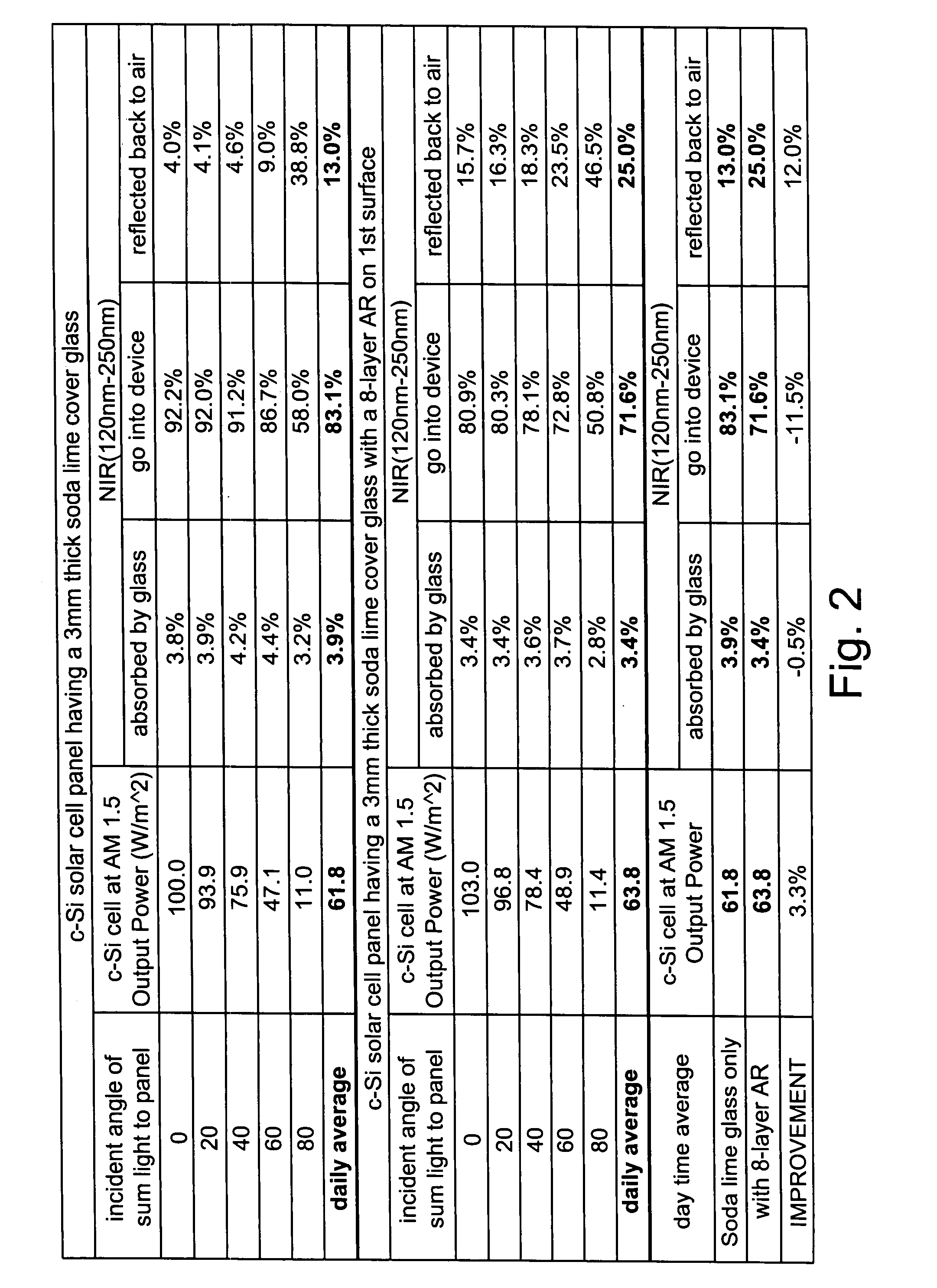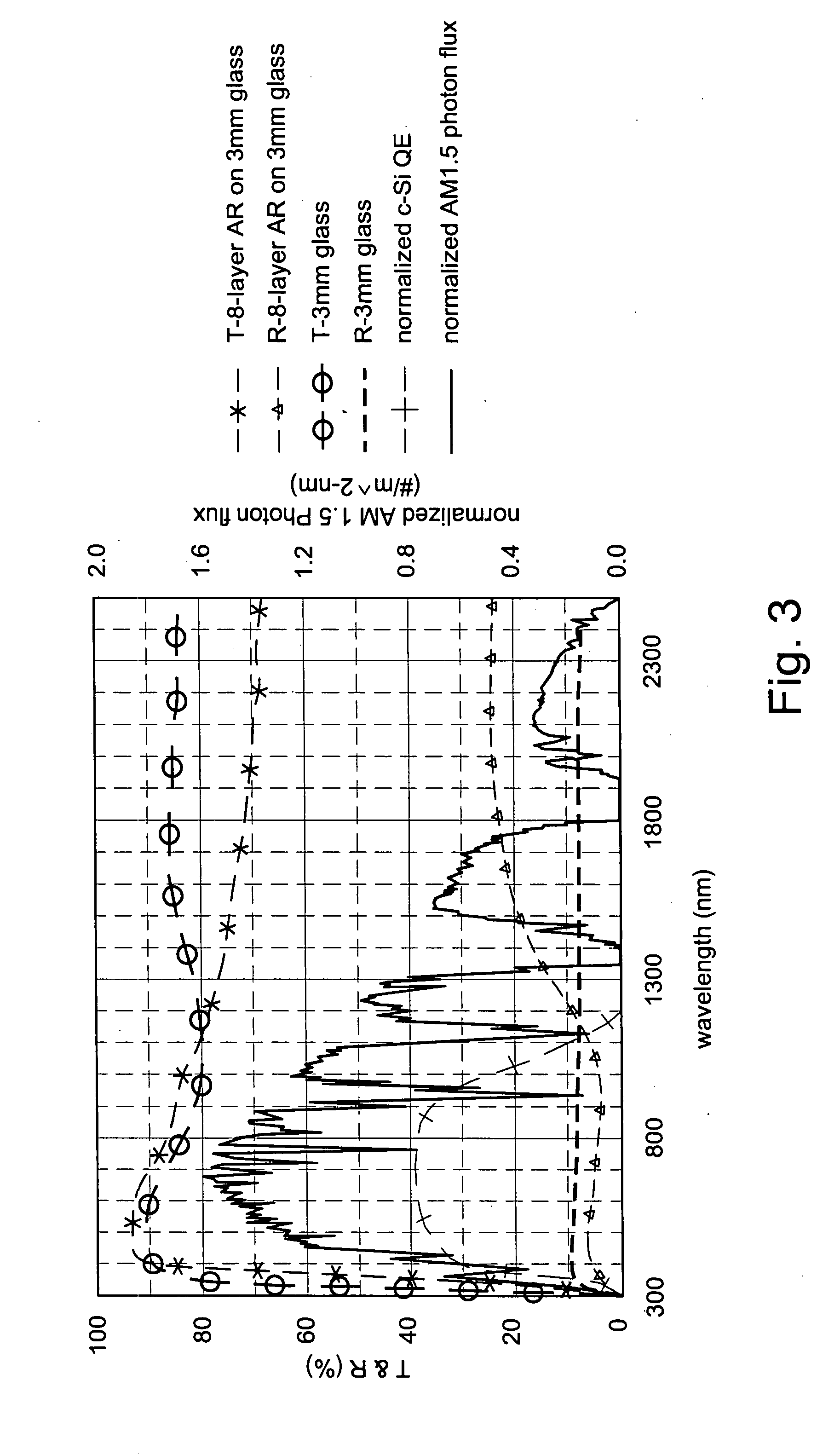Photovoltaic device having multilayer antireflective layer supported by front substrate
a photovoltaic device and anti-reflective layer technology, applied in the direction of optical elements, coatings, instruments, etc., can solve the problems of less efficient devices and degrade the performance of devices, and achieve the effect of reducing the reflection of desirable wavelengths and facilitating the operation of photovoltaic devices
- Summary
- Abstract
- Description
- Claims
- Application Information
AI Technical Summary
Benefits of technology
Problems solved by technology
Method used
Image
Examples
Embodiment Construction
[0006]In certain example embodiments of this invention, an improved multilayer anti-reflection (AR) coating is provided on an incident glass substrate of a solar cell or the like. This AR coating functions to reduce reflection of desirable wavelengths from the front glass substrate, thereby allowing more light within the desirable solar spectrum to pass through the incident glass substrate and reach the photovoltaic semiconductor film so that the photovoltaic device can be more efficient.
[0007]In certain example embodiments, the multilayer AR coating includes a plurality of pairs of alternating high refractive index layers and low refractive index layers. In certain example embodiments, the high refractive index may be of or include titanium oxide (e.g., TiO2 or other suitable stoichiometry), and the low refractive index layers may be of or include silicon oxide (e.g., SiO2 or other suitable stoichiometry). It has surprisingly been found that such a multilayer AR coating is capable ...
PUM
| Property | Measurement | Unit |
|---|---|---|
| wavelength range | aaaaa | aaaaa |
| refractive index | aaaaa | aaaaa |
| refractive index | aaaaa | aaaaa |
Abstract
Description
Claims
Application Information
 Login to View More
Login to View More - R&D
- Intellectual Property
- Life Sciences
- Materials
- Tech Scout
- Unparalleled Data Quality
- Higher Quality Content
- 60% Fewer Hallucinations
Browse by: Latest US Patents, China's latest patents, Technical Efficacy Thesaurus, Application Domain, Technology Topic, Popular Technical Reports.
© 2025 PatSnap. All rights reserved.Legal|Privacy policy|Modern Slavery Act Transparency Statement|Sitemap|About US| Contact US: help@patsnap.com



